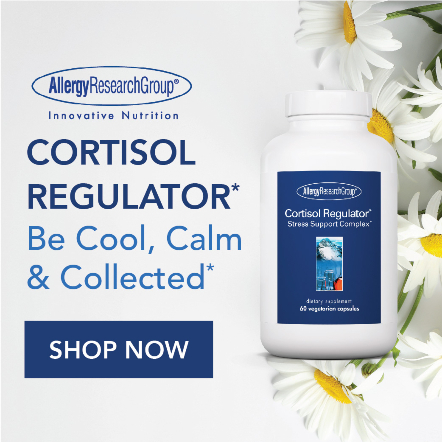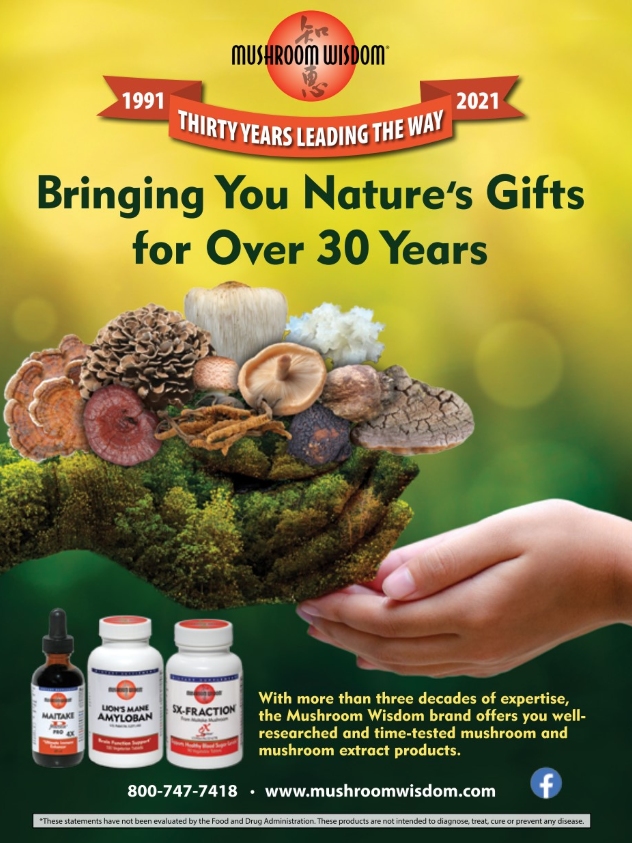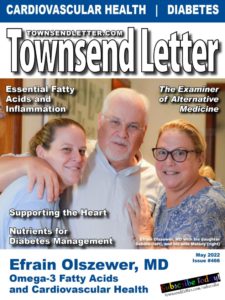The Publisher Gets Egg on His Face

Over the first weekend in March, I was informed through an email that the FDA had lowered the guillotine and banned compounded bio-identical hormones. Well, it turns out, there was no formal announcement by the FDA although reliable sources strongly suggested that such a plan was in the works. Due to my spreading this incorrectly stated information, I caused quite a stir through the bio-identical hormone community. A colleague was booted from her FB group because of posting my information. Needless to say, I ashamedly informed one and all by email and social media that no such announcement had occurred. However, the battle we have with the FDA to stop their plan to ban compounding pharmacies from making hormones is hardly over.
Their scientific advisory group, NASEM, put out a very misleading report in 2021 that essentially condemned compounding of hormones as being adulterated, not properly dosed, and ridden with adverse effects. The NASEM only used 13 studies to draw their conclusion—and none of them looked at the evidence-based literature supporting the use of bio-identical hormones. There is a campaign underway in the conventional medical community and certain consumer groups to end the compounding of hormones. One Twitter posting in the past week from a gynecologist in the UK excitedly complained about a woman who developed uterine cancer while using compounded hormones. My response to that was would there have been any concern if the woman had been using Premarin? These self-proclaimed experts “know” that pharmaceuticals work and compounded hormones are dangerous.
We need to remember that drug companies pay the FDA about $370K yearly for the pleasure of being a pharmaceutical manufacturer partially financing the payroll of the FDA. The FDA, the drug companies, and the medical schools all interact and work together on a daily basis. Medical schools and academic hospitals need the latest and greatest drugs to “cure” disease. Pharmaceutical companies need to make the next blockbuster to bring in the bucks and provide for their shareholders. The FDA acts as a mediator for the MDs and the drug companies, obligated to make both happy. A compounding pharmacy is an insult to the drug company and a renegade to the chain drug store. Just like alternative docs are disdained by university docs, compounding pharmacies are despised by chain pharmacies and drug companies.
We do need to write our Congress people about this situation informing them of the great risk that our patients face if they lose their access to compounded hormones. Our patients need to write up their stories of how the hormone prescriptions have changed their lives; they should submit them to the coalition to protect access to bio-identical compounded hormones: https://cbhrtcoalition.org/. We need to think about acting legislatively to restrict FDA authority over compounding of hormones and medicine in general. On a state level, legislation could be enacted protecting the compounding of hormones superseding FDA oversight; however, this would not be helpful for the doc/patient getting their prescriptions filled out of state.
Compounding got a black eye in 2013 when a New England compounder prepared a bad batch of corticosteroids being used in pain clinics for back injections. Since that time the FDA has relentlessly sought to derail compounding pharmacies. A memorandum of understanding (MOU) enacted two years ago by the FDA places onerous requirements on compounding pharmacies causing many to cease compounding. A ban on compounding hormones would provide impetus for the FDA to limit compounding of injectables. Injectable supplies made by compounding pharmacies are the only means to access B vitamin, mineral, amino acid, and chelation supplies; the pharmaceutical companies no longer produce these injections. Even low dose naltrexone, a drug that has become widely popular in the treatment of autoimmune disease, may be threatened if compounding pharmacies are further limited by the FDA.
Please join the Alliance for Pharmacy Compounding, www.a4pc.org. Write your Congress people now and get your patients educated and involved!
Controlling High Blood Pressure Book by Mark Houston, MD, and Lee Bell
If you are like me, you have been taught that the vast majority of hypertension is essential hypertension. What this term means is that the hypertension is not due to some rare disorder such as a pheochromocytoma or renal artery stenosis. Essential or primary or genetic hypertension does not have a specific disease causing the high blood pressure. However, what Dr. Houston calls “infinite insults” of life manifest themselves in the cardiovascular system as either inflammation, oxidative stress, or vascular immune dysfunction. In conjunction with one’s genetics, these “finite responses” to daily insults lead to damage to the artery endothelium, muscular media, and adventitial wall causing stiffness to these structures, and endothelial dysfunction, decreasing nitric oxide production necessary for the vessel to relax and dilate. The arterial insults, both biochemical and biomechanical, yield antigens binding to the arterial wall causing the trio of responses. Houston considers vascular disease to be a balance between injury and repair; nitric oxide and endothelial “progenitor” cells seek to repair the damage caused by inflammation, oxidative stress, and immune cell dysfunctioning. When vascular disease progresses, hypertension develops; but high blood pressure is asymptomatic—only diagnosed through blood pressure measurement.
Using this model Dr. Houston argues that hypertensive medication need not be the primary solution, although until the blood pressure is controlled by alternative means, the medication must be continued. Cardiology employs the Dash diets, a low sodium diet, as the primary nutritional management for hypertension. At his institute, the Hypertension Institute, it is assumed that one or more foods may be allergenic, sensitizing, or intolerant. Rather than doing a food allergy test, Houston asks patients to go on an elimination diet for two weeks avoiding gluten, dairy, eggs, corn, peanuts, soy, grains, legumes, nuts, seeds, nightshades as well as elimination of alcohol, caffeine, processed food, fast food, sugar, recreational drugs, and tobacco. (Of course, the latter two and alcohol will require special support.) What’s left to eat? Actually quite a few foods do remain, and copious water drinking is obligatory. Reintroduction of foods one by one will enable one to determine food sensitivities.
Next, Houston employs a liver detox and 16/8 fasting, meaning fasting for sixteen hours, then eating only within an 8-hour window of time. A major do-over of one’s eating is not something that can just be accomplished by giving the patient a booklet. The Hypertension Institute has all patients undergo cognitive behavioral therapy, at least to some degree, to relearn unhelpful ways of behavior and thinking. It is critical that the patient understand why they are making these changes. Houston wants the patient to recreate the environment in which they eat; one can’t make these changes if all kinds of processed and junk foods fill the refrigerator and pantry or if one heads to the food truck at lunch time.
Beyond what one eats, Houston discusses the literature supporting the use of each nutraceutical, vitamin, mineral, and EFA in the treatment of hypertension (despite the effort by conventional medicine to naysay supplements). Attempting to overcome one’s need for anti-hypertension drugs without the use of supplements is a fool’s mission. As you would expect, magnesium is number one on his list of supplements. However, he does want patients to use a wide range of hypertension-lowering nutraceuticals, including the use of CoQ10, garlic, and beetroot. He does offer some proprietary formulations that he favors (I will leave you to discover these on reading the book). One very fascinating chapter discusses the genetic aspects of hypertension; it turns out abnormal genetic SNPs do play a role in causing hypertension. Each SNP impacts the vasculature and renin-angiotensin system differently. Based on the abnormal SNP, a particular drug and nutraceutical is preferred to treating hypertension. For example, patients with the ACE I/D SNP would respond best to ACE inhibitor drugs and nutraceuticals pycnogenol, R-lipoic acid, garlic, and CoQ10.
The book originally published in 2021 by the CRC press is available now.
Cover Article: Is Fish Oil Effective Therapy for Cardiovascular Disease? by Efrain Olszewer, MD
Back in the day when we used to attend medical conferences, I was always impressed by doctors travelling great distances to give a presentation or just listen to the lectures. Probably I am among the minority, but it just didn’t seem reasonable to travel 12 hours for 15-20 credit hours. I was always amazed to see Sao Paolo, Brazilian, Dr. Efrain Olszewer in attendance, not just for one but for a great many integrative medicine conventions in the US. Of course, Olszewer is a very renowned orthomolecular physician in South America, as president of the Associacao Medica Brasileira de Pratica Ortomolecular (AMBO). His speaking engagements in the orthomolecular societies not only had him traveling to the US but frequently to Spain and Portugal as well. Olszewer is the author of more than 80 books; he has written numerous journal articles, including this month’s cover article.
I was particularly impressed with his authoring articles on the use of i.v. chelation therapy for cardiovascular disease. This was at a time years ago when the NIH chelation T.A.C.T. trial had not even been initiated. His work concluded that oral chelation failed to demonstrate effective changes in ASCHD compared to intravenous chelation. Before publication of the T.A.C.T. study, chelation therapy had a sullied reputation with the “quackbusters” frequently including it in their lists of fraudulent cures. It was heartening to have a Brazilian doctor publish articles countering the negative viewpoint American cardiologists held for EDTA chelation.1
In this issue Dr. Olszewer reviews and examines the literature on omega-3 fatty acids and cardiovascular prevention and treatment. Of course, we are not talking one or two studies. There are dozens and he analyzes a great many of them. As expected, many of the studies demonstrate an effective role for omega-3 fatty acids; however, there are more than a few that do not show such efficacy. For example, Olszewer discusses the meta-analysis compiled by Asmaa Abdelhamid for the Cochrane Database in 2018. Abdelhamid’s conclusion was that there was insufficient evidence for the use of the omega-3s in cardiovascular disease. Yet, Olszewer’s review of many other studies clearly demonstrates positive benefit. The REDUCE-IT trial published in December 2021 showed a purified form of EPA but not DHA called Icosapent Ethyl (IPE) had very positive cardiovascular benefit.2 In the study, 2 grams of IPE (Vascepta®) not only reduced triglycerides but also reduced MIs, strokes, and stenting. (Vascepta is now an approved drug agent for reducing cardiovascular risk.) On the other hand, the STRENGTH study does not demonstrate a similar positive benefit for fish oil, which is not just EPA but also DHA. The 2020 study using a pharmaceutical form of fish oil, Epanova® failed to demonstrate improvement in triglyceride levels compared to a corn oil placebo; the study conducted by AstraZeneca was terminated before completion.3 A logical question might be if the purified form of EPA yielded strong benefit, but a fish oil drug having both EPA and DHA failed, could it be that DHA has deleterious cardiovascular effects? Olszewer’s review suggests that there very well could be concerns based on the type of omega-3 supplement that is being studied.
Conventional thinking has been that our large consumption of processed omega-6 oils as contained in the Standard American Diet (SAD) is a major cause of obesity, diabetes, heart disease, and more. Of course, we advise patients to lower their intake of trans-fats, fried foods, and processed foods containing omega-6 oils. So, omega-6 oil is the number one enemy for cardiovascular disease, right? Well, no. It depends on the exact nature of the omega-6 oil, how it is processed (or not processed), and how we consume it. Brian Peskin, an advocate for the use of unprocessed omega-6 oils, writes in this issue about the necessity of omega-6s in our diet and how such omega-6s are effective in reducing inflammation, especially in support of cardiovascular health. So, do we use omega-3s or omega-6s or a combination?
References
1. Olszewer, E, Carter, P. EDTA chelation therapy in chronic degenerative disease. Med. Hypothesis. 1988: 27(1); 41-49.
2. Bhatt, D, et al. Reduction of cardiovascular events with Icosapentyl Ethyl Intervention Trial – REDUCE-IT. Amer Coll Card. 2021: Dec. 20.











